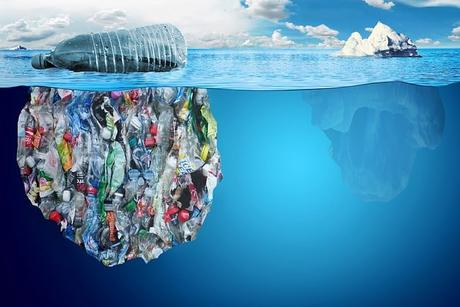It’s a known fact that wildlife is a victim of plastics. Now plastic as a potential source of toxic chemicals is further adding to the problem. As per a new report, plastics cause hormonal problems leading to growth and reproductive complications in a wide variety of wildlife.
It is shocking that despite years of research, very little is known about the cocktails of pollutants known as Endocrine-Disrupting Chemicals (EDCs) affecting wildlife in the oceans and on land and also how these interact in the environment.

Endocrines, the hormone-altering chemicals are common in day-to-day products from paint to pesticides and are linked to a number of illnesses including cancer, infertility, congenital disabilities, reproductive problems, obesity, and diabetes.
The ill-impact of plastic waste breaking down in fragile ecosystems is presently one of the critical research areas for scientists.
Polychlorinated Biphenyls (PCBs), the pollutants that are present in high levels in killer whales, found to cause reproductive problems. These were used in many plastics before being banned globally in 2004. A pod off the west coast of Scotland failed to produce a single calf in 25 years due to having high levels of PCBs.
Lulu, one washed-up orca of reproductive age, found to have failed to calve as 957mg/kg of PCBs accumulated in its lipid tissue which was 100 times above the threshold of toxicity.
“Lulu was barren, as if she was a juvenile,” said Paul Jepson from the Zoological Society of London and a co-author of the paper. “But she should have been in her prime.”
Marine mammals are particularly susceptible to PCBs, and as predicted by a recent model, the numbers of orca could reduce into half globally within a century. The fat-soluble EDCs accumulate in their tissues and mothers pass more of the toxins to their offspring because of their high-fat milk and long lactation periods.
The European Commission launched the World’s first system for classifying and banning endocrine-disrupting chemicals (EDCs) after getting barraged with criticism from scientists, NGOs, industry and consumer groups.
The leaching out of chemicals of landfill sites or the breakdown of plastic and other products in which PCBs were once common, stabilized its existence in Europe since 1998 despite the ban.
“We are looking at the possible exposure [of marine life], and evidence of toxicity is still developing,” said Jepson. The evidence is present in large number in mammals, fish, and sea birds with plastic in their stomachs. However, many of the potential effects of PCBs are still left to discover.
According to the paper published on Wednesday in the journal Proceedings of the Royal Society B: Biological Sciences, they witnessed that the release of EDCs have harmful effects on wildlife populations, but facts related to the interactions between such chemicals is yet to know. The examination of the possible effects of the existence of EDCs on human health is still due.
“We do not know what proportion of chemicals are EDCs. There is a very large proportion of chemicals that we use every day that we know very little about,” said John Sumpter, professor of ecotoxicology at Brunel University London and a co-author of the paper. “There is a huge gap in our knowledge. We just do not know what effect they are having.”
More work on the interaction of chemicals in the environment needed as per Sumpter. He found the current methods of testing chemicals after producing them are too slow, making the examination of interactions between different chemicals in the environment difficult.
“We are not very good at predicting what effect chemicals will have on the environment,” he said. “We need to get cleverer, to be able to look at the structure of chemicals and say this is how it will probably interact, based on that structure.”
The endocrine system is the collection of glands that produce hormones. It plays a critical role in maximum biological functions including growth, development, and reproduction. Some known sources of EDCs like PCBs already banned, but others like the synthetic hormones used in contraceptive pills, affect wildlife, including feminizing certain male fish applying deficient concentrations.

